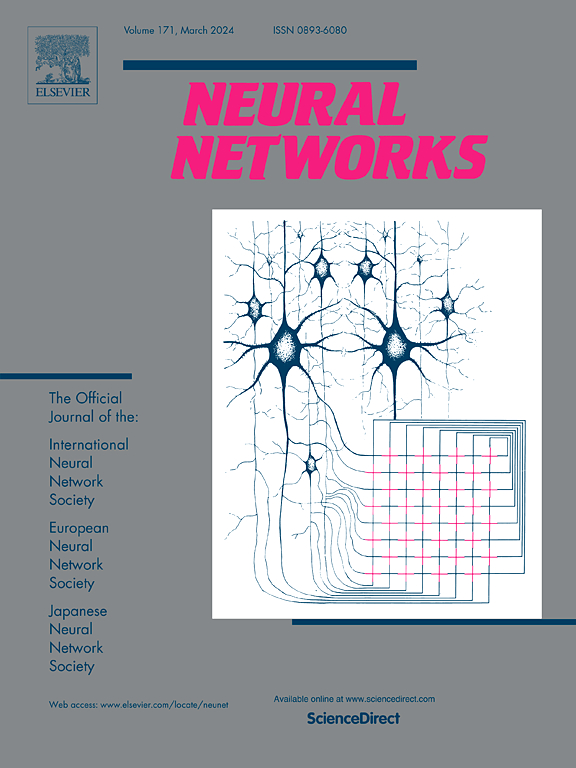从基于信息瓶颈的建模中统一去除噪声和水印。
IF 6.3
1区 计算机科学
Q1 COMPUTER SCIENCE, ARTIFICIAL INTELLIGENCE
引用次数: 0
摘要
图像去噪和去除水印的目的都是从观测到的噪声或水印图像中还原出干净的图像。过去的研究包括效果有限的非学习型研究或可解释性有限的学习型研究。为了同时解决这些问题,我们提出了一种统一处理图像去噪和去水印任务的方法。噪声和水印都被认为具有不同于原始图像内容的干扰模式,因此应通过鲁棒图像分析来检测。统一检测方法是基于著名的信息瓶颈(IB)理论和所提出的 SIB-GAN 方法,即通过监督方法将图像内容和干扰模式很好地分离开来。IB 理论指导我们通过对输入(有噪声或包含水印的图像)进行有控制的压缩来保留有价值的内容,如原始图像,然后只有没有干扰的内容才能通过网络进行有效的噪声或水印去除。此外,我们还会调整 IB 理论中的压缩参数,以学习一种接近图像内容最小充分表示的表示方法。特别是在处理非盲目噪声时,可以从坚实的理论基础中估算出适当的压缩量。在处理未见过的盲噪声数据时,去噪任务也显示了模型的泛化能力。所有这些都表明了所提出方法的可解释性。总之,所提出的方法在图像去噪、去除水印、去除混合噪声和水印这三个任务中都取得了可喜的成果,得到的图像非常接近原始图像内容,其性能几乎优于处理相同任务的所有先进方法。本文章由计算机程序翻译,如有差异,请以英文原文为准。

A unified noise and watermark removal from information bottleneck-based modeling
Both image denoising and watermark removal aim to restore a clean image from an observed noisy or watermarked one. The past research consists of the non-learning type with limited effectiveness or the learning types with limited interpretability. To address these issues simultaneously, we propose a method to deal with both the image-denoising and watermark removal tasks in a unified approach. The noises and watermarks are both considered to have different nuisance patterns from the original image content, therefore should be detected by robust image analysis. The unified detection method is based on the well-known information bottleneck (IB) theory and the proposed SIB-GAN where image content and nuisance patterns are well separated by a supervised approach. The IB theory guides us to keep the valuable content such as the original image by a controlled compression on the input (the noisy or watermark-included image) and then only the content without the nuisances can go through the network for effective noise or watermark removal. Additionally, we adjust the compression parameter in IB theory to learn a representation that approaches the minimal sufficient representation of the image content. In particular, to deal with the non-blind noises, an appropriate amount of compression can be estimated from the solid theory foundation. Working on the denoising task given the unseen data with blind noises also shows the model’s generalization power. All of the above shows the interpretability of the proposed method. Overall, the proposed method has achieved promising results across three tasks: image denoising, watermark removal, and mixed noise and watermark removal, obtaining resultant images very close to the original image content and owning superior performance to almost all state-of-the-art approaches that deal with the same tasks.
求助全文
通过发布文献求助,成功后即可免费获取论文全文。
去求助
来源期刊

Neural Networks
工程技术-计算机:人工智能
CiteScore
13.90
自引率
7.70%
发文量
425
审稿时长
67 days
期刊介绍:
Neural Networks is a platform that aims to foster an international community of scholars and practitioners interested in neural networks, deep learning, and other approaches to artificial intelligence and machine learning. Our journal invites submissions covering various aspects of neural networks research, from computational neuroscience and cognitive modeling to mathematical analyses and engineering applications. By providing a forum for interdisciplinary discussions between biology and technology, we aim to encourage the development of biologically-inspired artificial intelligence.
 求助内容:
求助内容: 应助结果提醒方式:
应助结果提醒方式:


